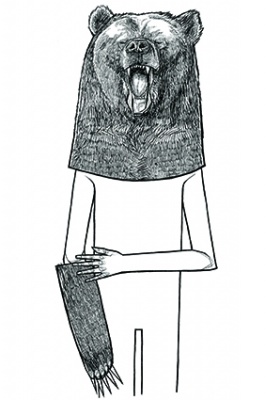BAREFACED STORIES IN NEW ZEALAND
BATS Theatre (Out-Of-Site) Cnr Cuba & Dixon, Wellington
01/03/2014 - 01/03/2014
Production Details
Australia’s most popular storytelling series heads across the Tasman for ONE-NIGHT ONLY EXCLUSIVE at BATS Theatre.
Featuring local Wellingtonians telling nothing but true tales -some sad, some downright perverse.
Honest, risk-taking entertainment that hits the spot!
BATS Theatre, Cnr Cuba & Dixon Streets, Wellington CBD
9.30pm, 1 Mar (75mins)
BOOKINGS: www.bats.co.nz / TICKETS: $18 / 14 / 12
Theatre ,
1hr 15 mins (no interval)
Admiration for bared bitterness, pain and vulnerability
Review by Charlotte Simmonds 02nd Mar 2014
“That sounds like The Moth,” I thought when asked to review this show. “And Corner Diary was Wellington’s version of something-like-The-Moth-but-totally-not.”
So it was really nice to have the show introduced by our Perth visitors, Andrea Gibbs and Kerry O’Sullivan, as: “A bit like The Moth and we’re also big fans of your Corner Diary.” Hooray!
So if you’re not familiar with The Moth, it is “true stories told live without notes” and this is the same format that Barefaced Stories follows with the added “empty pint time limit” which appears to have been the way the hosts selected the local storytellers, by following the rule of, “If I was sitting here with an empty pint, would I keep listening to you?”
The line up consists of:
Ines Almeida, who tells a story about a trip to [hip-hop star] Flavor Flav’s hotel penthouse after a Christchurch Public Enemy show, and what do you know, he’s older than my dad;
Uther Dean who tells a story about a trip to Auckland to see A Winter’s Tale during his Honours year and repeats the foot-hand/toe-paw/Taupō rule for Māori place name pronunciation that has been my guiding light for pronunciation ever since Allen Henry told it to me in the New Zealand Festival bar many festivals ago…;
James Nokise who tells a story that is possibly the most Moth-like about a trip to the Leeds Festival in the midst of recovering from a breakup;
Eamonn Marra who tells a story about a trip home after a horrible New Year’s Eve party during which his iPod is stolen and then returned;
Freya Desmarais who tells a story about another trip to a hotel room for very different reasons ending in, “Every time I go to the toilet now, I think, ‘That’s $50 down the drain.’”
Andrea Gibbs and Kerry O’Sullivan break up the evening with excerpts from their diaries, inspired, as mentioned, by Corner Diary.
While there is no set theme to the evening, themes do emerge and they appear to be heart-break – the heart-break of the Christchurch earthquakes, of ended relationships, of disappointment, of rejection – and for comic relief the theme of a persistent need of physical relief and the compulsion to pee.
From one performer to the next, the narration styles are so very different that they can’t be compared or ranked in any way. I haven’t laughed this much in a long time, and yet none of the stories were without an element of bitterness, pain and the painful vulnerability for the performers of setting themselves so stark and bare on the stage – even if it is a curated telling, even if you could lie if you wanted to – and pain and admiration on the part of the audience at seeing other people do what we perhaps would not have the guts for.
(No, none of the performers were wearing bear faces – I knew that either the poster image or the name was lying, they couldn’t both be right, they couldn’t be wearing bear faces and be bare-faced unless they were actually bears! No! They weren’t bears! Can the show make up for this let-down? YES!)
I missed out on a live Moth show last time I was in New York and have only ever heard the podcasts. Having seen some of The Witching Hours episodes live and listened to others online, and with The Kincaid Weekender podcasts being part of the Fringe this year too, I’ve been very interested lately in the difference between hearing someone speak and seeing someone speak – particularly since I have recently discovered that there is apparently a whole other form of communication going on called ‘body language’ that I’m not really aware of and don’t really understand.
What can I deduce from seeing someone speak? Some people look at the audience. Some people don’t. Psychological analysis might deduce that not looking at the audience is indicative of nerves, and yet most of the performers who looked at the audience on this night actually mentioned their nerves, so perhaps it’s indicative of nothing. “It’s almost as if I’m actually afraid,” one storyteller direct addresses, with the house lights up, in a tone of self-mockery. What else can I deduce?
Some people wear pretty dresses and some people don’t wear dresses at all and this does not seem to detract from the value. Some people tell stories using gestures to aid the audience’s imagery, e.g., “I was standing like this,” or, “He was doing this,” that clearly are not going to come across on a recording. An audience member gets up and leaves and the performer makes a gesture that causes everyone to laugh and I laugh too but I’m not sure what the gesture signifies.
In conclusion, language plus body language versus language? No conclusions. I will have to do further investigation. Hopefully at another show something like this one.
Copyright © in the review belongs to the reviewer







Comments